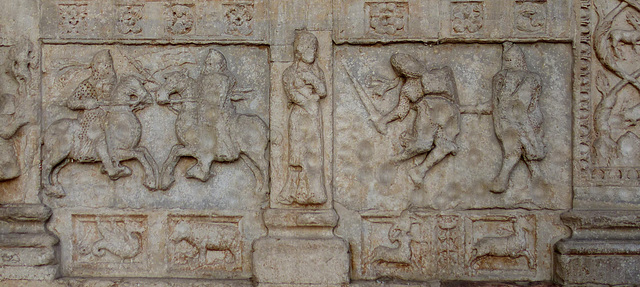Verona - Basilica di San Zeno
Verona - Basilica di San Zeno
Verona - Basilica di San Zeno
Verona - Basilica di San Zeno
Verona - Basilica di San Zeno
Verona - Basilica di San Zeno
Verona - Basilica di San Zeno
Verona - Basilica di San Zeno
Verona - Basilica di San Zeno
Verona - Basilica di San Zeno
Verona - Basilica di San Zeno
Verona - Basilica di San Zeno
Verona - Basilica di San Zeno
Verona - Basilica di San Zeno
Verona - Basilica di San Zeno
Verona - Basilica di San Zeno
Verona - Basilica di San Zeno
Verona - Basilica di San Zeno
Verona - Basilica di San Zeno
Verona - Basilica di San Zeno
Verona - Basilica di San Zeno
Verona - Basilica di San Zeno
Verona - Basilica di San Zeno
Verona - Basilica di San Zeno
Verona - Basilica di San Zeno
Verona - Basilica di San Zeno
Verona - Basilica di San Zeno
Verona - Basilica di San Zeno
Verona - Basilica di San Zeno
Verona - Astra
Verona - Arena
Verona - San Fermo Maggiore
Verona - San Fermo Maggiore
Verona - Romeo and Juliet
Verona - Tunnel of Love
Verona - Piazza delle Erbe
Verona - Salumeria G. Albertini
Verona - Duomo di Verona
Verona - Duomo di Verona
Verona - Duomo di Verona
Verona - Duomo di Verona
Verona - Duomo di Verona
Verona - Duomo di Verona
Verona - Duomo di Verona
Verona - Duomo di Verona
Location
Lat, Lng:
You can copy the above to your favourite mapping app.
Address: unknown
You can copy the above to your favourite mapping app.
Address: unknown
See also...
Keywords
Authorizations, license
-
Visible by: Everyone -
All rights reserved
-
248 visits
Verona - Basilica di San Zeno


Already Theodoric the Great, King of the Ostrogoths, may have funded a church, erected over the tomb of Saint Zeno, who, following the legends, was born in Mauretania and died around 380 in Verona.
The erection of the present church began in the 9th century. Soon after San Zeno´s relics were translated into the new church. At that time Charlemagne´s son Pepin (aka "Pepin of Italy") resided in Verona and a large Benedictine monastery grew all around the church.
When the Magyars invaded Italy in the early 10th century, the church got severely damaged, but the relics were not harmed, as they had been taken out and were hidden. In 967, a new church was built with the patronage of Otto I.
On January 3, 1117, the church was damaged by an earthquake, that ruined so many buildings in Northern Italy. The church was restored and got enlarged in 1138.
The façade is striking! It was created in two different stages. The portico and the portal were carved before 1138 by Niccolò (see "Duomo de Verona") and his school. During the second half of the 12th century Master Guglielmo ("Gugliemus") completed the facade.
There are four reliefs that are very uncommon and probably connect to Theodoric the Great (+526). The previous upload had the two of the right side, so here are the two of the left side.
This is "interpreted" as the fight between Theodoric the Great and his opponent Odoacer during the "Rabenschlacht" (493). Raben (= Ravenna) was held by Odoacer. After a two years siege, Theoderic won the "Rabenschlacht" conquered Ravenna and forced Odoacer to sign a treaty. Only ten days later Odoacer was slain by Theoderich while they shared a meal.
This battle as well is echoed" within the Hildebrandslied and the saga of Dietrich von Bern.
The lady inbetween the reliefs was added later.
The erection of the present church began in the 9th century. Soon after San Zeno´s relics were translated into the new church. At that time Charlemagne´s son Pepin (aka "Pepin of Italy") resided in Verona and a large Benedictine monastery grew all around the church.
When the Magyars invaded Italy in the early 10th century, the church got severely damaged, but the relics were not harmed, as they had been taken out and were hidden. In 967, a new church was built with the patronage of Otto I.
On January 3, 1117, the church was damaged by an earthquake, that ruined so many buildings in Northern Italy. The church was restored and got enlarged in 1138.
The façade is striking! It was created in two different stages. The portico and the portal were carved before 1138 by Niccolò (see "Duomo de Verona") and his school. During the second half of the 12th century Master Guglielmo ("Gugliemus") completed the facade.
There are four reliefs that are very uncommon and probably connect to Theodoric the Great (+526). The previous upload had the two of the right side, so here are the two of the left side.
This is "interpreted" as the fight between Theodoric the Great and his opponent Odoacer during the "Rabenschlacht" (493). Raben (= Ravenna) was held by Odoacer. After a two years siege, Theoderic won the "Rabenschlacht" conquered Ravenna and forced Odoacer to sign a treaty. Only ten days later Odoacer was slain by Theoderich while they shared a meal.
This battle as well is echoed" within the Hildebrandslied and the saga of Dietrich von Bern.
The lady inbetween the reliefs was added later.
- Keyboard shortcuts:
Jump to top
RSS feed- Latest comments - Subscribe to the comment feeds of this photo
- ipernity © 2007-2025
- Help & Contact
|
Club news
|
About ipernity
|
History |
ipernity Club & Prices |
Guide of good conduct
Donate | Group guidelines | Privacy policy | Terms of use | Statutes | In memoria -
Facebook
Twitter

Sign-in to write a comment.